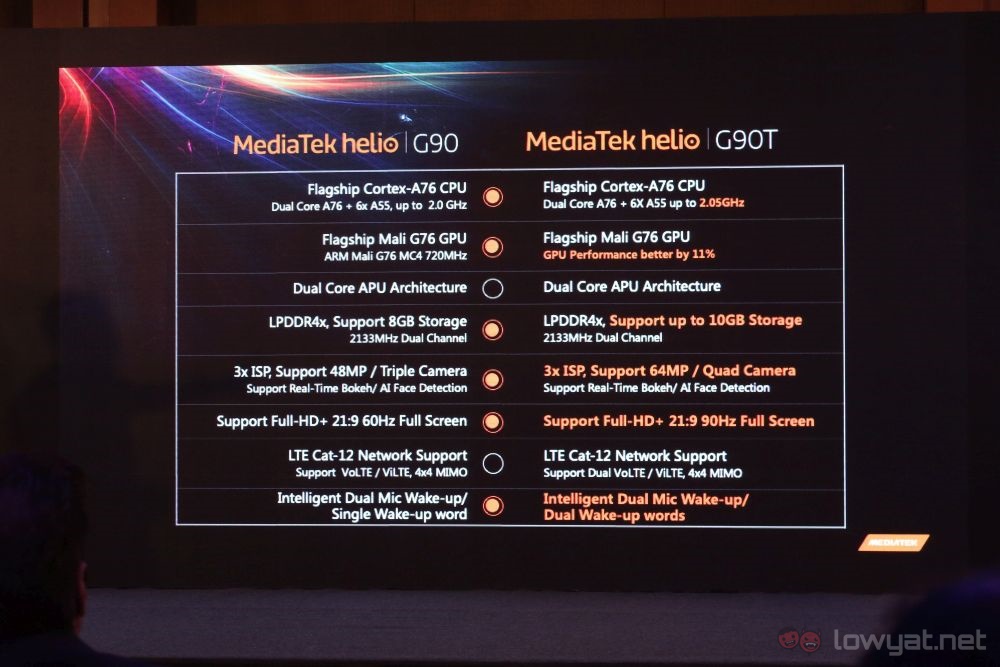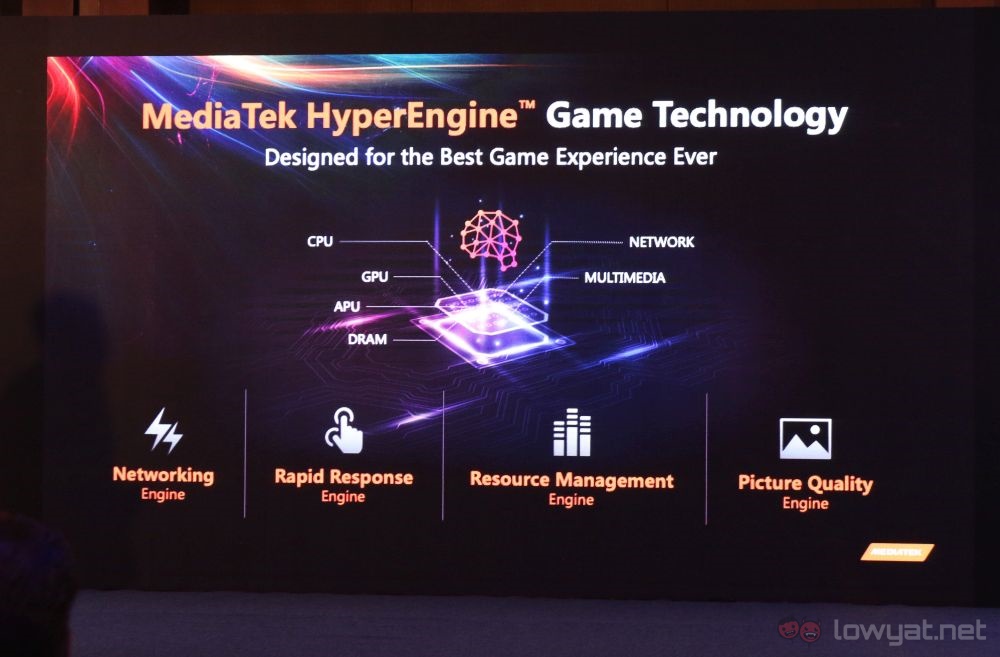Both the Helio G90 and G90T come with two ARM Cortex-A76 cores and six Cortex-A55 cores. But while the cores on the G90 boasts clock speeds of up to 2GHz, the ones on the G90T go up to 2.05GHz. Both also feature ARM’s Mali G76 GPU, with clock speeds of up to 720MHz. That said, the ones on the Helio G90T have been pushed to provide 11% better performance.
Beyond those, the new Helio G90 also supports up to 8GBmLPDDR4x-2133MHz in dual channel, while the Helio G90T pushed it all the way up to 10GB. It’s the same story with camera support. The Helio G90 supporting up to 48MP and up to three cameras, while the Helio G90T supports up to 64MP and up to a quad-camera setup. Both chipsets also support up to 21:9 aspect ratio Full HD+ displays, but while the Helio G90 supports a refresh rate of up to 60Hz, the Helio G90T goes all the way up to 90Hz. Numbers aside, both the Helio G90 and Helio G90T also comes with what MediaTek calls HyperEngine tech. This is a collection of engines that aims to improve the mobile gaming experience. Among them include a Rapid Response Engine, which cuts down input lag, allowing touch inputs to be reflected in game morer quickly. Other features include a Picture Quality Engine, which essentially upscales game content up to HDR10 standards, and a Networking Engine which allows for connections to both WiFi and mobile data, using only the connection with the better connection to reduce latency.
It’s also interesting to note that the Helio G90 and G90T are the start of a new series of chipsets by the company, rather than gaming versions of the Helio P90. During a Q&A session with TL Lee, Head of MediaTek’s Wireless Business Unit, he said that the company will another Helio G chipset by the end of the year. MediaTek has not announced when we can find phones equipped with either the Helio G90 or G90T on the market. That said, one phone maker announced that it will have a phone featuring the new chipset later this year.

